FAQ: How The Mastercard MATCH List Works
February 13, 2025
Most Common Ways to Land On The MATCH List
April 29, 2025Why Am I On The MATCH List?
Have you been notified by your payment processor that you are on the MATCH List, had your merchant account terminated, or were denied a new merchant account due to being on the MATCH List? Are you also totally confused as to how this happened? You are not alone. The MATCH List is relentless and notoriously difficult to deal with, even down to finding out why you were even placed on it. If you’ve been placed on the MATCH List and are looking for answers, this blog is for you. Keep reading to learn more about how to find out why you’re on the MATCH List and how to get off MATCH ASAP and get back in good standing.
MATCH List Reason Codes
- Account Data Compromise – An occurrence that results, directly or indirectly, in the unauthorized access to or disclosure of Account data.
- Common Point of Purchase (CPP) – Account data is stolen at the Merchant and then used for fraudulent purchases at other Merchant locations.
- Laundering – The Merchant was engaged in laundering activity. Laundering means that a Merchant presented to its Acquirer Transaction records that were not valid Transactions for sales of goods or services between that Merchant and a bona fide Cardholder.
- Excessive Chargebacks – With respect to a Merchant reported by a Mastercard Acquirer, the number of Mastercard chargebacks in any single month exceeded 1% of the number of Mastercard sales Transactions in that month, and those chargebacks totaled USD 5,000 or more. With respect to a merchant reported by an American Express acquirer (ICA numbers 102 through 125), the merchant exceeded the chargeback thresholds of American Express, as determined by American Express.
- Excessive Fraud – The Merchant effected fraudulent Transactions of any type (counterfeit or otherwise) meeting or exceeding the following minimum reporting Standard: the Merchant’s fraud-to-sales dollar volume ratio was 8% or greater in a calendar month, and the Merchant effected 10 or more fraudulent Transactions totaling USD 5,000 or more in that calendar month.
- Reserved for Future Use
- Fraud Conviction – There was a criminal fraud conviction of a principal owner or partner of the Merchant.
- Mastercard Questionable Merchant Audit Program – The Merchant was determined to be a Questionable Merchant as per the criteria set forth in the Mastercard Questionable Merchant Audit Program (refer to section 8.4 of this manual).
- Bankruptcy/Liquidation/Insolvency – The Merchant was unable or is likely to become unable to discharge its financial obligations.
- Violation of Standards – With respect to a Merchant reported by a Mastercard Acquirer, the Merchant was in violation of one or more Standards that describe procedures to be employed by the Merchant in Transactions in which Cards are used, including, by way of example and not limitation, the Standards for honoring all Cards, displaying the Marks, charges to Cardholders, minimum/ maximum Transaction amount restrictions, and prohibited Transactions set forth in Chapter 5 of the Mastercard Rules manual. With respect to a merchant reported by an American Express acquirer (ICA numbers 102 through 125), the merchant was in violation of one or more American Express bylaws, rules, operating regulations, and policies that set forth procedures to be employed by the merchant in transactions in which American Express cards are used.
- Merchant Collusion – The Merchant participated in the fraudulent collusive activity.
- PCI Data Security Standard Noncompliance – The Merchant failed to comply with Payment Card Industry (PCI) Data Security Standard requirements.
- Illegal Transactions – The Merchant was engaged in illegal Transactions.
- Identity Theft – The Acquirer has reason to believe that the identity of the listed Merchant or its principal owner(s) was unlawfully assumed for the purpose of unlawfully entering into a Merchant Agreement.
How Do I Find Out Why I Am On The List?
If you’ve read through the above list and aren’t sure why you are on it, there are a few ways you can find out. First, give your bank a call. They are the ones who have the power to add and remove you from the list since they are the ones you have a relationship with.
In the MATCH database, there are many required fields for banks to fill out when placing you on the list. It wasn’t done by mistake; somebody had to fill in your information and add a reason code to go along with it.
The problem is that there is no easy way to search the MATCH List to see why you’re on it. You must call your bank to find out why; however, they have no obligation to tell you anything. That’s right: They don’t have to tell you a thing, which is done by design. Frustrated? You’re not alone. This is just the first step of an uphill journey to getting off the MATCH list.
Questions To Ask Yourself and Research
If you’re getting nowhere with your bank and still want answers, there are a few questions you can ask yourself and things you can research. It requires a bit of detective work, but it can help you understand why you’ve been placed on the MATCH List and work toward a resolution with your bank and payment processors.
- What is your chargeback rate? You are allowed a chargeback rate of 1% before you start getting into MATCH-List-Danger-Zone. Check your recent chargebacks to see if you’re in the danger zone; it is one of the most common reasons that businesses are put on the MATCH List.
- Have you had a data breach? If your business has recently fallen victim to a data breach, this might be the reason you’re on MATCH.
- Are you a victim of identity theft? Pull your credit report to see if someone else tried to open a merchant account using your name. The bank may have placed you on the MATCH List for this reason, if so.
Don’t Wait Too Long
If you suspect you are on the MATCH List, it is important to act quickly. If you let too much time pass, you may lose the opportunity to prove yourself and return to good standing. In addition, the more time you let pass by, the more money you will lose. As a business without a merchant account, you will not be able to accept credit card payments or wire payments for up to five years on the MATCH List.
Good Merchants Can Be Placed In Error
It happens: Good merchants can be placed in error or through no fault of their own. Victims of identity theft, fraud, or data breaches can find themselves on the MATCH List. The MATCH List was created to protect consumers and banks, not merchants. If you truly have no idea why you are on the MATCH List, you may fall into this category.
How to Get Off MATCH and Clear Your Name
If you are getting nowhere with your bank and have no idea why you are on the MATCH List, don’t worry. You haven’t run into a brick wall—we are here to help you knock it down and get to the bottom of it.
Getting professional, legal help is the best way to get off the MATCH List. Your only alternative? To wait the five-year penalty period and age off of it. You can get removed from the MATCH List early, get back in good standing with a bank, reopen a merchant account, and get back to business as usual.
Get Off The MATCH List with TFM Law
If you have found yourself on the Match List, you have options. Don’t wait the five-year period, get back to business ASAP.
The Law Offices of Theodore Monroe focuses on litigation and counseling in the areas of payments, credit card processing, e-commerce, direct response marketing, and Federal Trade Commission enforcement.
Last year, the firm removed 100% of the people who came to us from the MATCH list.
Theodore F. Monroe, Founder of TFM Law, has successfully:
- Represented merchants recovering funds from processors
- Structured processing relationships to comply with Card Brand requirements
- Drafted and negotiated contracts involving payment facilitators and ISOs
- Represented continuity merchants in compliance and litigation issues
- Fought for numerous companies in suits brought by the Federal Trade Commission and obtained excellent results for firms in the digital products, loan modification, government grant, and nutraceuticals industries
Before opening his firm, Mr. Monroe practiced law with Crosby, Heafey, Roach & May (now Reed Smith LLP) and Lewis, D’Amato, Brisbois & Bisgaard (now Lewis, Brisbois, Bisgaard & Smith), where he defended numerous accounting and law firms in professional liability actions, and insurance carriers in bad faith actions.
Before becoming a lawyer, Mr. Monroe worked as a forensic accountant at Coopers & Lybrand, which provided him with a unique background in forensic accounting and financial analysis among litigators in Los Angeles. Mr. Monroe studied at Duke University Law School, achieved a BS with Honors in Accounting from the University of Kentucky, and is a member of the California State Bar and the Kentucky State Bar.
For more information, resources, or to schedule a consultation with us, visit us at HowToGetOffMatch.com!




